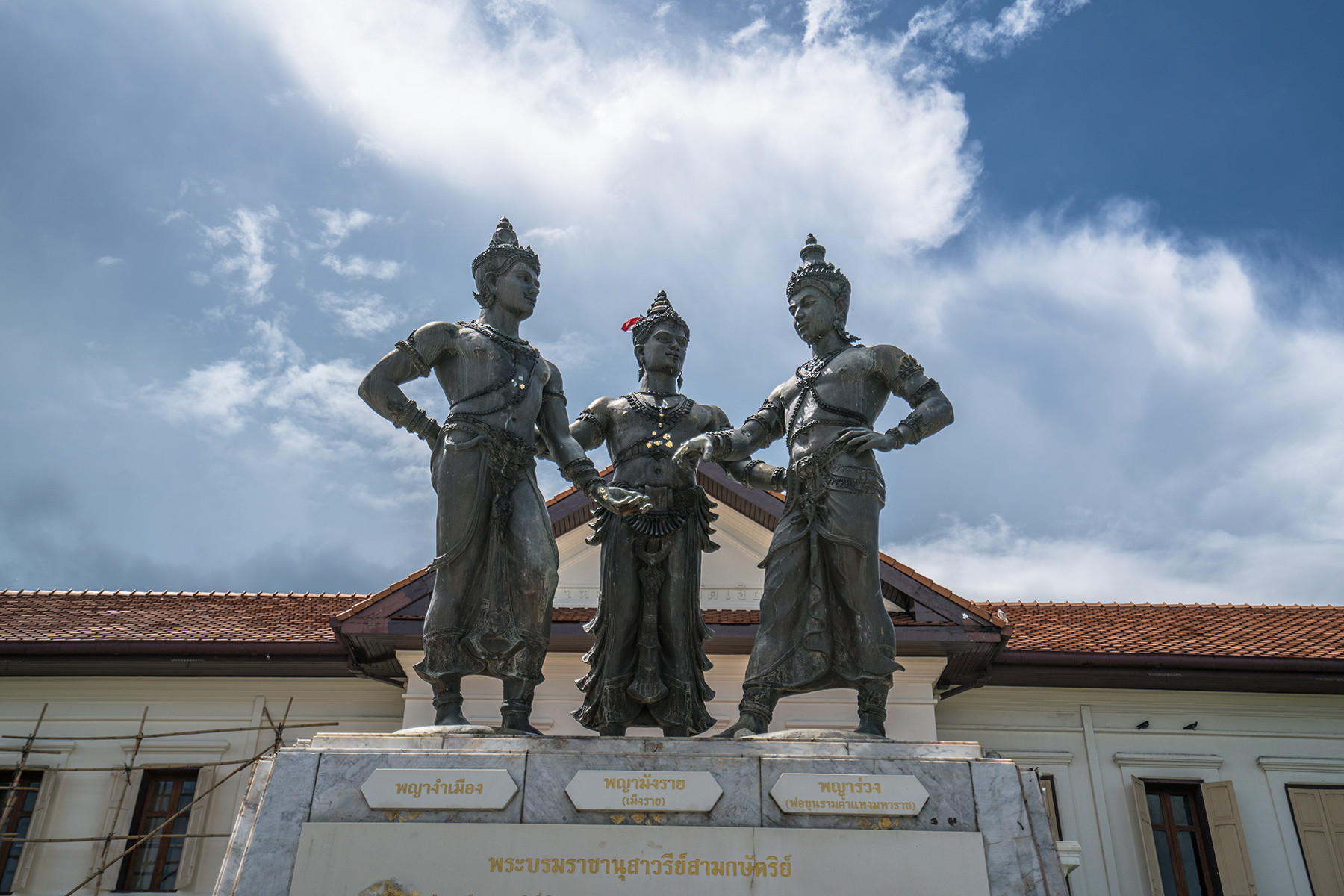Thailand (ประเทศไทย) can be an attractive destination for retirees, with its tropical climate, beautiful beaches, and relatively low cost of living. If the idea entices you, you’ll need to learn about Thailand’s pension regulations and plan how to fund your retirement (การเกษียณอายุ).
Keep reading to learn more about the following:
- The Thai pension system
- Pension advice and support in Thailand
- Who is eligible for a pension in Thailand?
- Social Security Office (SSO) pensions in Thailand for expats
- Thailand’s pension rates and contributions
- Supplementary pensions in Thailand
- Other pensions in Thailand
- How do you apply for your Thai pension?
- Useful resources
SJB Global
Let SJB Global guide you on a range of topics including saving plans, retirement and pensions transfers, investments, and more. This financial advisor provides a remote service, so you can contact their experts at a time that suits you. Get in touch with SJB Global to find out how they could help you in your life abroad.
The Thai pension system
Thailand’s pension (บำนาญ) system includes state, social security, and private pensions, though not all are available to expats. The state pension is called the ‘Old Age Allowance’ (OAA) (เงินสงเคราะห์วัยชรา), payable to Thai citizens when they reach the national retirement age (60).

In addition, anyone who works in Thailand and makes social security contributions for at least 15 years can obtain a Social Security Office (SSO – สำนักงานประกันสังคม) pension. Separate occupational pension schemes are in place for government workers and civil servants. Private plans are also available but are relatively uncommon.
Thailand is one of the fastest-aging countries globally, and its state pension system has received significant criticism. The Mercer Global Pension Index (2022) concluded it had the worst pension system of all 44 countries analyzed. It recommended that the system be improved by increasing OAA payments and the coverage of occupational pension schemes.
A separate report by the International Labour Organization (ILO) found that Thailand had one of the lowest social pension benefits in the world, with the basic OAA payments for people aged 60 falling below the international extreme poverty line.
Subsequently, in 2023, the government announced a significant change to the OAA. It declared that it would start means-testing payments, limiting eligibility to those with ‘no income, or insufficient income to cover the cost of living’ rather than for all over the retirement age.

Local expert
Jane Evans
Insider tip
As it stands, the OAA remains the same with the same eligibility rules. No further details have been released on how means-testing will work. There’s a committee consulting on it at the moment.
However, it’s been speculated that the OAA payments will remain the same for people currently getting them, and eligibility rules will change for people who are due to qualify (i.e., people coming up to their 60th birthday).
Successive Thai governments have attempted to introduce a new National Pension Fund (NPF), which would involve employees and employers each contributing 10% of their salary in the long term. This pension scheme was first mooted in 2008 and approved in 2021 but is yet to come to fruition. Conversely, Employees Provident Funds (EPF/PF) are voluntary schemes set by employers and are referred to as occupational pensions in this article.
Pension advice and support in Thailand
Even though this article provides essential advice on the Thai pension scheme, it’s vital to get professional help to learn how the rules apply if you retire in Thailand, especially when transferring your foreign retirement savings.
The Wealth Genesis
At The Wealth Genesis, clients pay the same transparent fixed fee for investment and pension transfer services, eliminating conflicts of interest or surprises. The firm’s independent status gives them access to an unrivaled range of investments and products, delivering bespoke solutions to clients at the best value.
The Federation of Accounting Professionals (TFAC – สภาวิชาชีพบัญชี) regulates accountants in Thailand. At the same time, the Ministry of Finance (MOF – กระทรวงการคลัง) and Securities and Exchange Commission (SEC – สำนักงานคณะกรรมการกำกับหลักทรัพย์และตลาดหลักทรัพย์) oversee financial and investment advisors.
Who is eligible for a pension in Thailand?
Thailand’s pension age
The state pension age in Thailand is 60, at which point Thai nationals become eligible for a monthly Old Age Allowance (OAA). The same goes for civil servants and government occupational pensions.

However, you can already access the Social Security Office (SSO) benefits at the age of 55.
Who can claim a state pension (Old Age Allowance) in Thailand?
On turning 60, Thai nationals are entitled to an OAA payment; the amount payable increases with age, reaching its maximum when the recipient turns 90.
However, in August 2023, the government introduced new regulations to make the OAA means-tested: payments will only be available to people with low or no income. The National Committee on the Elderly is consulting on how the proposed changes might work.
Under current plans, the adjustments won’t affect people already receiving the OAA. Instead, the regulations will only be amended for people turning 60 before they become eligible for the payment.
Social Security Office (SSO) pensions in Thailand for expats
Expats are not eligible for the OAA.
However, if you work for a Thai company, you’ll automatically contribute to an SSO pension. If you’re not eligible for an SSO pension, you can contribute to the National Savings Fund (NSF) or a private pension scheme.
Transferring your pension to Thailand
You may be able to transfer your retirement savings from your home country, for example, if you receive a UK pension. However, as Thailand is not on the UK’s approved QROPS list, moving your pension funds may incur an overseas transfer charge.
If you’re looking for advice on transferring a pension to Thailand and wondering how best to manage your retirement, a financial advisor can help. Many even offer free consultations, like The Wealth Genesis.

Still, income originating in your home country is not taxable in Thailand during retirement.
Whether you can transfer an occupational or private pension depends on Thailand’s fiscal agreements with your country of origin. Therefore, seeking independent financial advice before moving pension savings is wise.
Thailand’s pension rates and contributions
Taxes rather than contributions finance the OAA (i.e., the state pension).
This means all Thai nationals receive the payment regardless of their employment history. The ILO’s report found that four in five older people are covered by the OAA, with the main exceptions being retirees from the civil service.
The amount payable under the OAA ranges from ฿600 to 1,000 per month, depending on the recipient’s age. Payments are not taxable, and the current rates (2023) are as follows:
- 60–69 years old: ฿600 per month
- 70–79 years old: ฿700 per month
- 80 to 89 years old: ฿800 per month
- 90 years old+: ฿1,000 per month
Supplementary pensions in Thailand
SSO pension
Employees who work for companies in Thailand pay social security contributions, known as Section 33 payments. These entitle the worker to various protections and benefits, such as:
- Illness
- Disability
- Family
- Old Age
However, the ILO found that only 40% of the employed population contributed to the SSO pension, as most of the Thai workforce is in informal employment.

Workers contribute 5% of their income to the social security system. Their employers match this contribution, and the government tops it up. However, only employees who make at least 15 years of payments are eligible for an SSO pension when they retire (minimum age 55).
The payments are as follows:
| Years of contributions | Payouts |
| Under 1 year | An ‘Old Age gratuity’ lump sum is payable, equal to your contributions |
| 1–15 years | An ‘Old Age gratuity’ lump sum is payable, equal to your and your employer’s contributions and other SSO benefits |
| 15 years + | 20% of your average wage from the previous 60 months. Plus, 1.5% is payable for each additional qualifying year above 15 years (e.g., 21.5% for 16 years, 23% for 17 years) |
SSO pension for people formerly in employment
If you previously worked for a Thai company but have left your job, you can voluntarily make social security contributions (Section 39 payments). To qualify, you must have left your employer in the last six months and have paid Section 33 premiums for at least a year.
Section 39 contributions are payable at a fixed rate of ฿432 per month. Your eligibility for a pension is calculated the same as under Section 33. If you get a job with a Thai employer again, you’ll revert to Section 33 coverage.
SSO pension for self-employed and freelance workers
Different contributions and payments apply if you contribute to social security under Section 40, for example, if you’re self-employed or a freelance worker.
Residents with Section 40 coverage enrolled in Plan 2 (฿100 per month) or Plan 3 (฿300 per month) receive a lump sum when they reach the age of 60.
- If you make Plan 2 contributions, the government will top up your payments by ฿50 each month
- For Plan 3 contributions, this rises to ฿150 per month
- Workers can make an additional contribution of up to ฿1,000 per month, but the government’s monthly supplementation remains at ฿150
National Saving Fund (NSF)
The National Saving Fund (NSF – กองทุนการออมแห่งชาติ) is a voluntary scheme for workers not covered by the OAA, SSO, or civil service pensions. It allows people to contribute between ฿50 and ฿13,200 each year, with the Thai government matching some of their contributions up to the following amounts:
- Age 15–30: ฿600 per year
- Age 31–50: ฿960 per year
- Age 51–60: ฿1,200 per year
Savings in the NSF rise in line with the average 12-month rates offered by Thai banks. These funds are converted into a 20-year pension scheme and paid out from ages 60 to 80.
The report by the ILO found that the scheme had 2.4 million members in 2019, with 48% working in agriculture and 31% in self-employment.
Civil service pensions
There are two civil servant pensions in Thailand. These include a non-contribution-based pension funded by taxes and the contribution-based Government Pension Fund (GPF – กองทุนบำเหน็จบำนาญข้าราชการ).

Both are available from the age of 60.
- Civil Service Pension: Civil servants with more than 25 years of service receive an annuity based on the average salary of their last 60 months. Those with between 10 and 25 years of service receive a lump sum.
- Government Pension Fund: Civil servants contribute between 3% and 15% of their salary. A 3% contribution is mandatory; above this threshold is voluntary. The government contributes 5%. At retirement, the worker can withdraw the total value as a lump sum or a monthly pension.
Other pensions in Thailand
Some industries in Thailand have occupational pension schemes (i.e., Employees Provident Funds or EPF), though these are relatively rare. The most notable are the Local Government Officers Pension Fund and the Private Teachers Aid Fund. Contributions are voluntary and may work as follows:
- Contributions: Employees and employers each pay 5–15% of their salary
- Benefits: A lump sum of accrued contributions with tax privileges (except if you withdraw funds earlier than 55).
Private pensions are uncommon.
Some other forms of financial support are available to people who contribute to Thailand’s social security system, such as Survivor and Disability pensions.
Survivor pension
If a worker who qualifies for an SSO pension dies within five years of becoming eligible, their next of kin is entitled to a one-off payment.
This is equal to 10 times the monthly pension the deceased received. A death benefit of 50% of their average wage (one year) is also payable if they made social security contributions for at least 10 years.
Disability pension
If you are considered severely disabled, you will receive a Disability pension of 50% of your wage for the rest of your life.
For a minor disability, you’ll receive 30% of your income (maximum ฿3,000 per month) for up to 180 months.
How do you apply for your Thai pension?
Old Age Allowance
Thai nationals can receive their monthly OAA from their 60th birthday.
The recipient must be registered with the local authorities to receive the allowance. Recipients can either collect their money directly from their local municipal office or have it transferred into their bank account.
SSO pension scheme
You can take your SSO pension anytime from age 55 or 60 if you’ve made Section 40 contributions.
You’ll become eligible when you retire and cease making payments. Your employer should inform the SSO that you are no longer employed within a month of leaving the company. Subsequently, you can advise the SSO that you intend to claim your pension.
Useful resources
- Ministry of Finance (MOF) – keep up to date with the official pension regulations
- Social Security Office (SSO) – official information and resource for the SSO pension
- International Labour Organization (ILO) – review of pensions in Thailand





